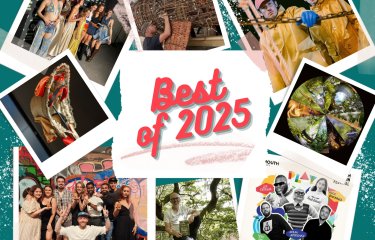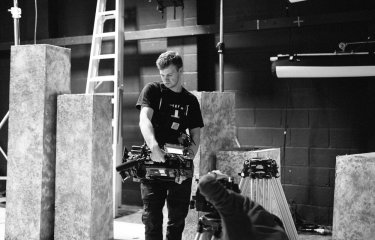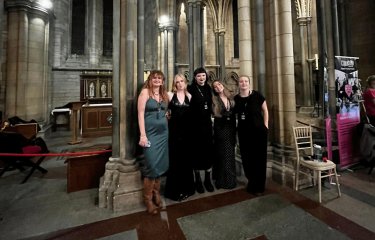Design Students Create Toys for Sensory Beings
26 March 2019
In collaboration with the award-winning Joanna Grace, second-year BA(Hons) Sustainable Product Design students have been creating a series of sensory educational toys for children with profound and multiple learning disabilities (PMLD), also known as Sensory Beings.
Joanna is a special education needs and disability consultant and the founder of The Sensory Projects. She’s also a TEDx speaker, trainer, author and the latest winner of the Creative Learning Guild’s Visual Arts and Design award. Her projects look to improve the mental health and wellbeing of people with PMLD by creating unique, sensory experiences.
This is the third time that Joanna has worked with students from Falmouth University in the creation of new sensory products and the collaboration is proving to be a successful one.
Each year, students have been tasked with the development of a sensory toolkit, one that provides stimuli and evokes interaction and engagement. Responsible for concepting, researching, testing and building, each student works on creating a product that fulfils the needs of users, including people with PMLD, as well as carers and health professionals.
Simon Andrews, Senior Lecturer on BA(Hons) Sustainable Product Design, is the lead academic on the project, overseeing the students as they create the sensory toolkit.
He told us: “It’s very important that the students develop design research methodologies that engage with potential users of the products. Human centred design underpins everything we do on SPD, establishing the real needs of users.”
During the project, the students collaborate and communicate with the children and people with PMLD, using user-centred activities to identify specific materials, textures, shapes and sounds that stimulate positive responses in the people that use them.
Simon added: “This project empowers the children to become co-designers. The fact that this is done through non-verbal communication is a rich area for further design research.”
In addition to having to consider the user response, practical design elements, and health and educational requirements, the students also consider the economic, environmental and manufacturing constraints. The desired result being a sustainable sensory product.
Previous products have included a small handheld air pump – connected by a tube to another identical pump, enabling two children to playfully use them to blow each other in the face – a spinning mobile with lights and sensory materials attached to it, and a stack of spinning, illustrated light boxes. Each product stimulates touch, sight and hearing.
The current students are still working on their prototypes. Once completed, the products will be presented in an exhibition at Grays Wharf Gallery, Penryn, at the beginning of May.




